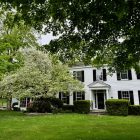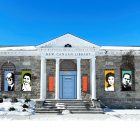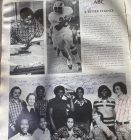Opinion
Letter to the Editor
|
NewCanaanite.com recently received the following letter to the editor. Please email your letters to editor@newcanaanite.com to publish them here. ***
On June 2, the New Canaan Museum & Historical Society hosted its Ice Cream Social. The weather was perfect, and the atmosphere was celebratory as more than 1000 attendees, ranging in age from 8 weeks to 94 years, enjoyed ice cream, cake, the Town Band, vintage cars, and games while exploring the campus and the historic house museums.
The day could not have been the wonderful success it was without the generosity of businesses in Town and the work of dozens of dedicated volunteers. Phil Luongo, owner of Gofer Ice Cream of New Canaan, made – and saved – the day. He donated delicious flavors, plus toppings, sprinkles, and cups. But only 35 minutes into the event, with a line snaking its way out into parking lot, we realized we would run out. With a huge smile, Phil arrived with more so that nobody left disappointed. Phil is a relatively recent owner of the store on Main Street, but he jumped right in to help the Museum & Historical Society and put a smile on hundreds of young faces. All my thanks to the members of the Exchange Club who scooped the ice cream and Nick Williams who performed clean-up duty for two hours straight; the National Charity League – Canaan Parish and New Canaan Chapters, Elizabeth DeMuth, who organized them, and all who baked cakes, helped serve, and ran games; Christopher DeMuth and the other S.L.O.B.s who lugged and hauled everything that was too heavy for the rest of us; the Town Band for another year of its fabulous music; Frances Wilson, Patricia Oxman, and Karen Ferguson, who educated visitors to the Rock School and the Hanford-Silliman House; Board Governors Janice Luddy and Ellen Cummings for welcoming everyone at the check-in desk; Russ Jones for gathering prizes for the People’s Choice awards, and the car owners for letting us admire their vintage cars; Scott Ready and Old Faithful for the classic fire trucks; and Board Governor Mark Markiewicz, who has designed our Special Collections Museum and was there to answer questions about the construction.




